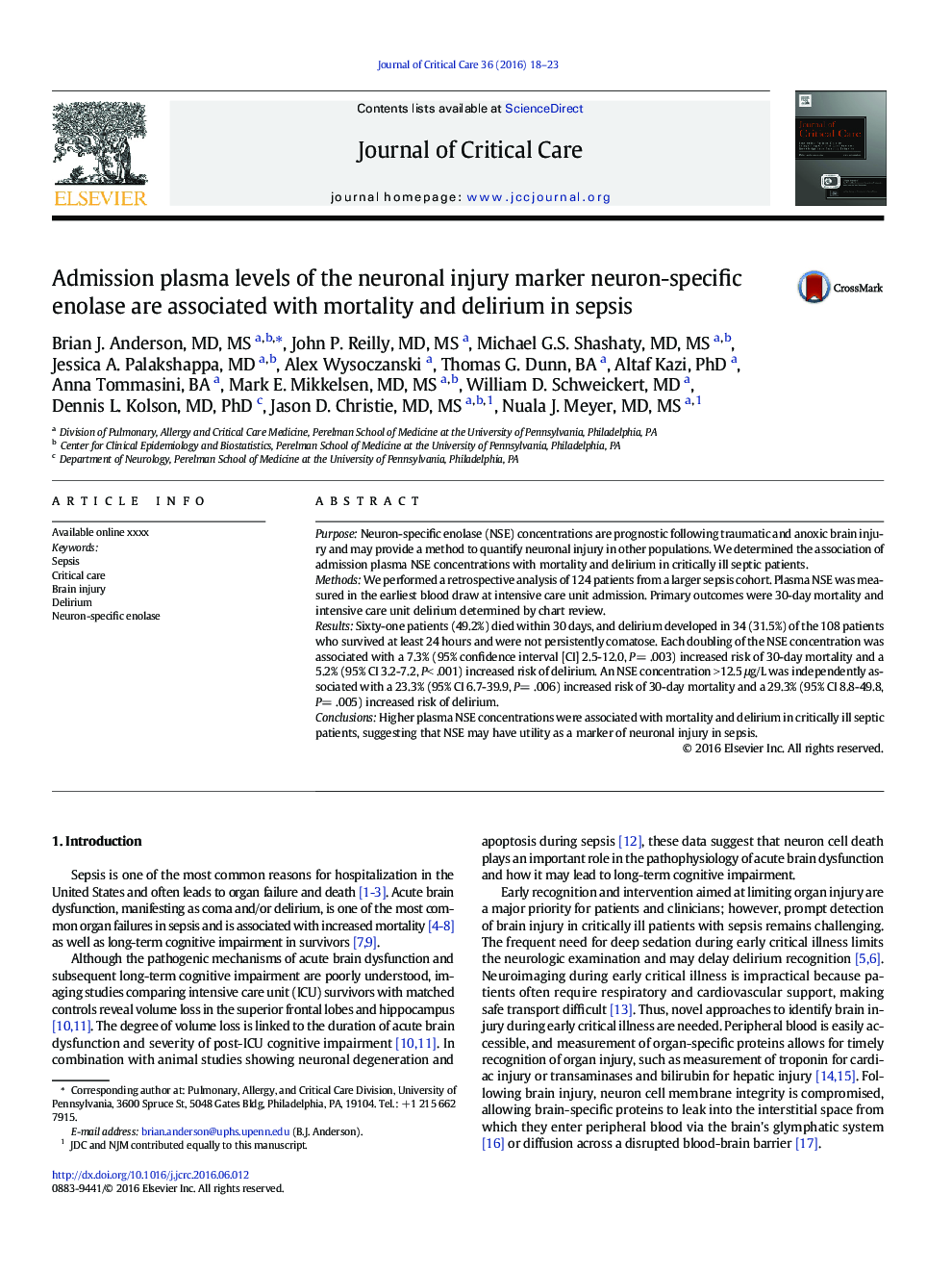| Article ID | Journal | Published Year | Pages | File Type |
|---|---|---|---|---|
| 2764385 | Journal of Critical Care | 2016 | 6 Pages |
PurposeNeuron-specific enolase (NSE) concentrations are prognostic following traumatic and anoxic brain injury and may provide a method to quantify neuronal injury in other populations. We determined the association of admission plasma NSE concentrations with mortality and delirium in critically ill septic patients.MethodsWe performed a retrospective analysis of 124 patients from a larger sepsis cohort. Plasma NSE was measured in the earliest blood draw at intensive care unit admission. Primary outcomes were 30-day mortality and intensive care unit delirium determined by chart review.ResultsSixty-one patients (49.2%) died within 30 days, and delirium developed in 34 (31.5%) of the 108 patients who survived at least 24 hours and were not persistently comatose. Each doubling of the NSE concentration was associated with a 7.3% (95% confidence interval [CI] 2.5-12.0, P= .003) increased risk of 30-day mortality and a 5.2% (95% CI 3.2-7.2, P< .001) increased risk of delirium. An NSE concentration >12.5 μg/L was independently associated with a 23.3% (95% CI 6.7-39.9, P= .006) increased risk of 30-day mortality and a 29.3% (95% CI 8.8-49.8, P= .005) increased risk of delirium.ConclusionsHigher plasma NSE concentrations were associated with mortality and delirium in critically ill septic patients, suggesting that NSE may have utility as a marker of neuronal injury in sepsis.
